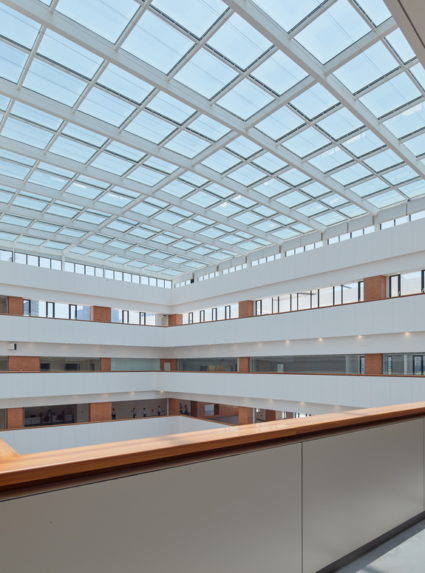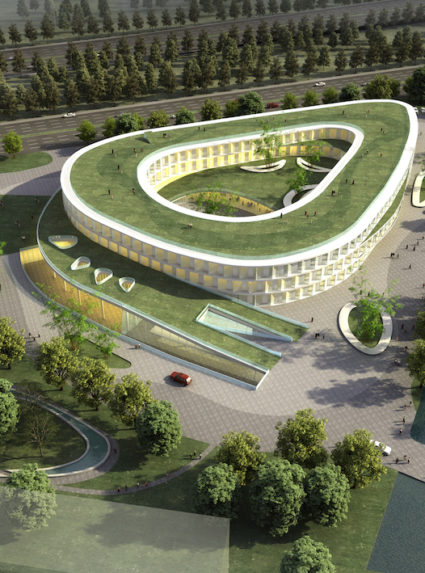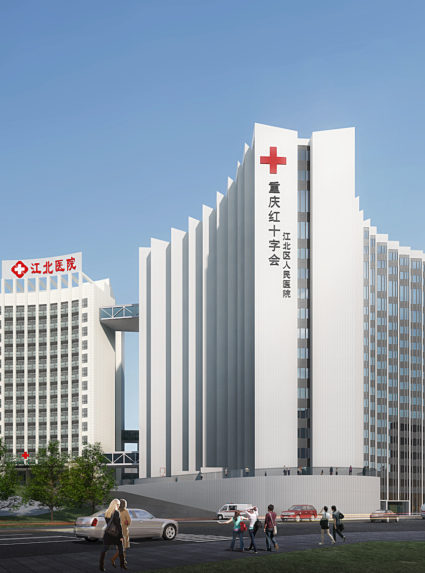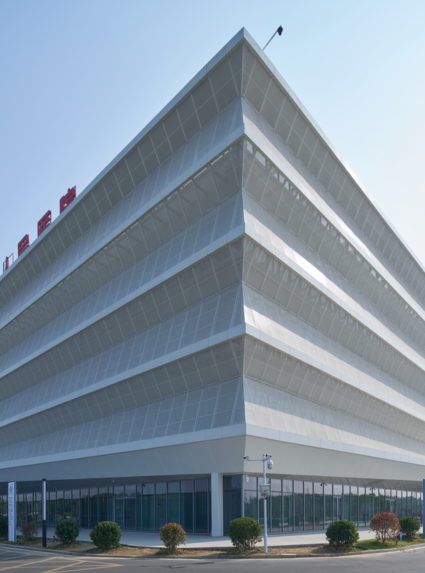
Jining Public Health Center
The Jining Public Health Center is a regional infectious disease hospital designed to accommodate both daily operations and emergency response needs. Featuring a flexible courtyard layout, clear zoning, and an adaptive L-shaped structure, the center seamlessly integrates nature and natural light to create a safe, efficient, and human-centered healing environment.
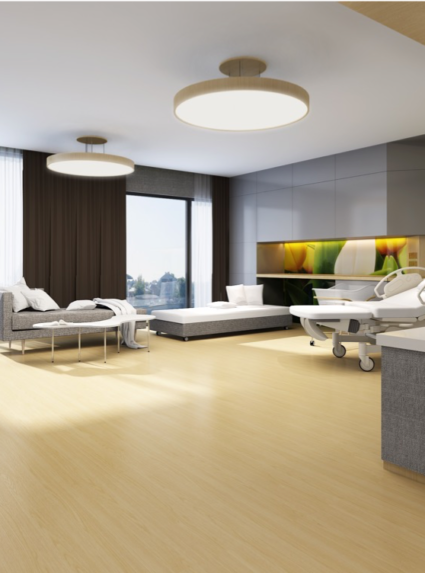
Nanjing Jiahe Maternity Hospital
This high-end private maternity hospital optimizes workflows with an efficient same-floor workstation model, enhancing doctors’ movement and connectivity via multiple passageways for better efficiency. A sunken courtyard brings fresh air, natural light, and urban views, while underground spaces maximize functionality. The interior blends wood, white, and gray tones for a warm, serene atmosphere. More than a hospital, it feels like home.
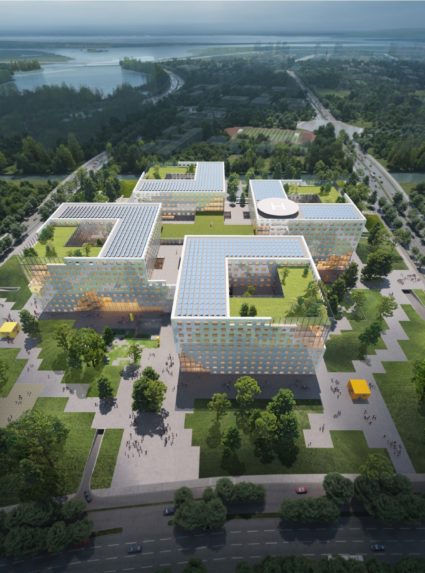
Wuxi International Healthcare Campus
This is more than just a hospital for treating illnesses—it is a playful city within a city, designed with deep care for children. A truly child-friendly, family-friendly, environment-friendly, and city-friendly green hospital, it embodies a holistic approach to healing and well-being.
-425x573.jpeg)
Hudong District Medical Center
The Hudong Regional Medical Centre, is located in Pudong, Shanghai, north-east of Xigou Harbour, with a total floor area of 169,800 square metres, including medical care, scientific research and teaching (medical school) functions. It is a model of close connection between scientific research and teaching and clinical medical care....

Guangyuan Medical and Rehabilitation Center Camplus, Sichuan
In 2019, Guangyuan in northern Sichuan led China’s integration of healthcare and elder care, leveraging its natural landscape. Medical services form a dual-core hub with a nearby commercial center. Inspired by Swiss private healthcare, refined medical services blend into traditional care, enhanced by Swiss hotel management expertise.
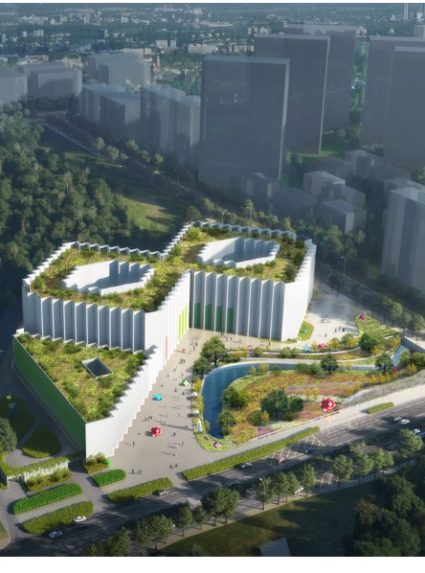
Shenzhen Third Children's Hospital
This is more than just a hospital for treating illnesses—it is a playful city within a city, designed with deep care for children. A truly child-friendly, family-friendly, environment-friendly, and city-friendly green hospital, it embodies a holistic approach to healing and well-being.
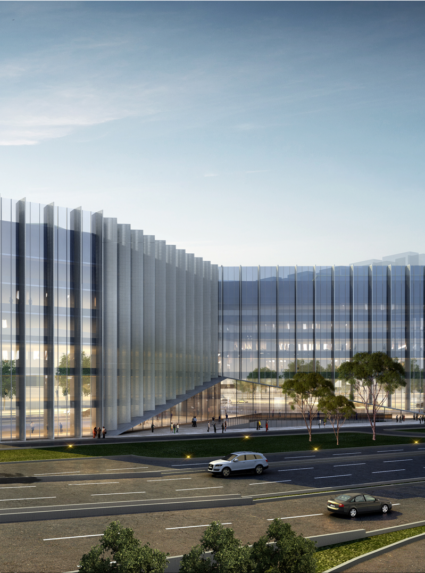
The University of Hong Kong Shenzhen Hospital Phase II
This Phase II expansion of the University of Hong Kong-Shenzhen Hospital spans 190,000 sqm, with a total planned area of 580,000 sqm and 3,000 beds. Phase I, at 380,000 sqm with 2,000 beds, occupies 80% of the site. The remaining 20% will house the 200,000-sqm Phase II, optimizing land use, reducing scale, enhancing comfort, strengthening integration with Phase I, and bridging research, teaching, and medical services.
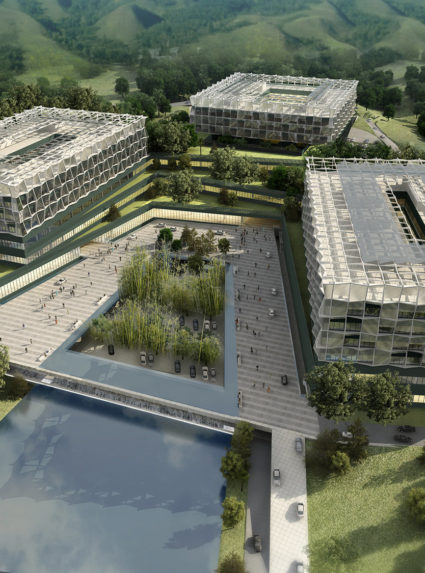
Nanjing Public Health Medical Centre
Located southeast of Nanjing, Qinglong Mountain features distinct ecological characteristics, including mountains, forests, and lakes. The site’s overall terrain slopes from west to east, with two valleys in the north and center seamlessly connecting to the planned arterial road to the east while showcasing the mountain’s unique natural beauty. The surrounding ridges provide a natural security barrier and enable multiple access points.

Nanjing Drum Tower Hospital
The Drum Tower Hospital South Expansion Project is located in the centre of Nanjing. The design concept for the project comes from the traditional Chinese cultural interpretation of the word hospital, which in English comes from the Latin word for hospital, originally meaning to gather guests, and in Chinese, ‘hospital’ means a medical compound....
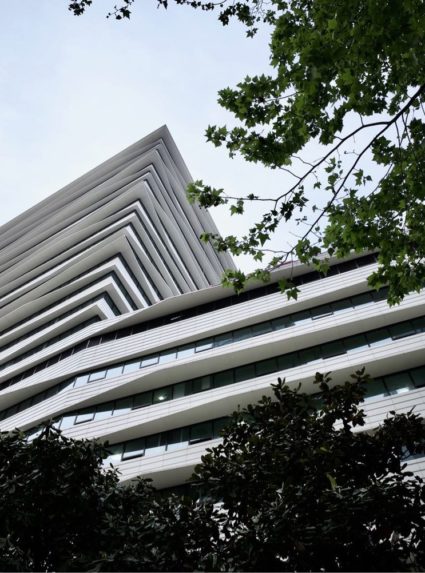
Shanghai Oriental Hospital
This project is the renovation and expansion of Oriental Hospital, located in the bustling Lujiazui area of Pudong. The new wing, positioned west of the existing building, is seamlessly integrated, forming a cohesive structure that maximizes operational efficiency.
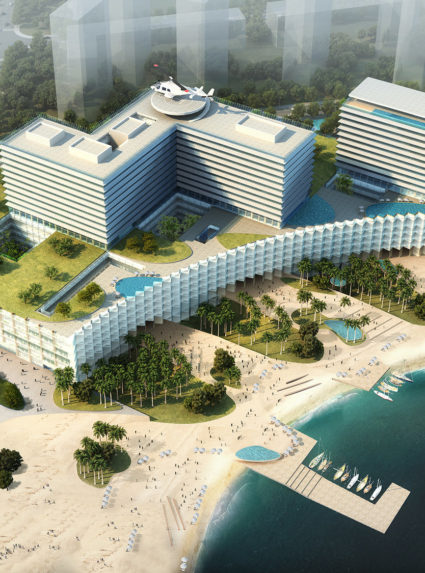
Zhongshan Hospital Fudan University
A safe, serene, and comforting healing environment; a hospital where staff can thrive and grow; a medical coastline infused with sunshine, beaches, seawater, and hot springs; an efficiently connected healthcare matrix.
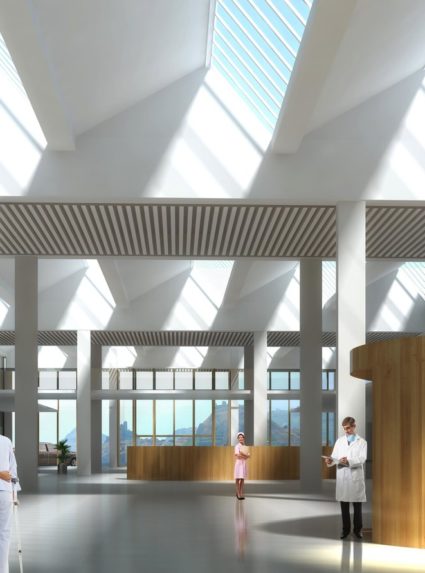
Extension of the Hospital of Sion
The low-profile expansion, seamlessly aligned with the valley’s orientation, allows the entire hospital to blend harmoniously into the natural landscape of the Alps.

The Second phase of the Shenzhen Hospital of Southern Medical University
This modern university hospital’s U-shaped design reflects its identity. The second phase consists of standardized modules, like a child’s building blocks, enabling flexible adaptation to operational needs. Modular design also streamlines procurement and construction, enhancing efficiency and scalability.

Nantong Central Innovation District Medical Center and Class III General Hospital
A medical campus growing with investment and innovation; underground transport and waterways ensure safety, tranquility, and sustainability. A centripetal design fosters a human-centered experience, while an expanding network links the central hospital to a broader medical hub.
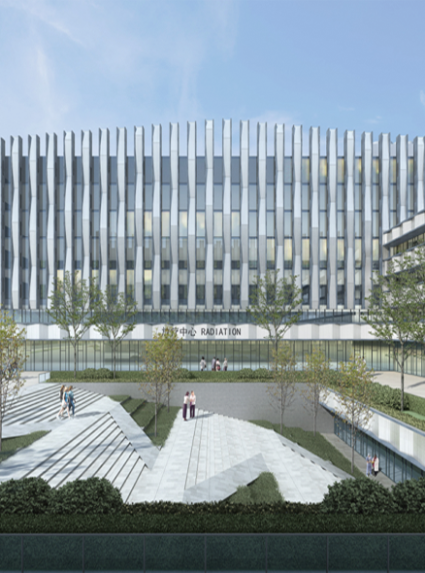
Weihai Xincheng Hospital
Three medical centers with modular, flexible layouts—independent yet interconnected. Shared courtyard landscapes, an underground support system, an above-ground medical street, and a seamlessly integrated garden hospital.
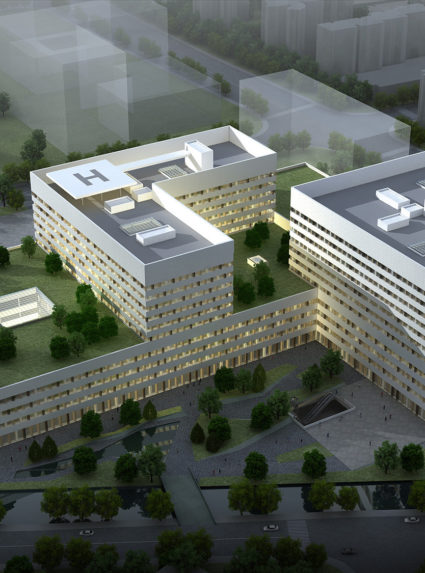
Southern Nanjing
New City Medical Center
Traditional Chinese spatial forms are applied to the planning of the hospital’s living areas. In both the outpatient and inpatient lobbies, courtyards enhance spatial permeability, energizing the public areas. The plaza features multiple sunken atriums, adding depth between levels while strengthening the openness and connectivity of the underground spaces.
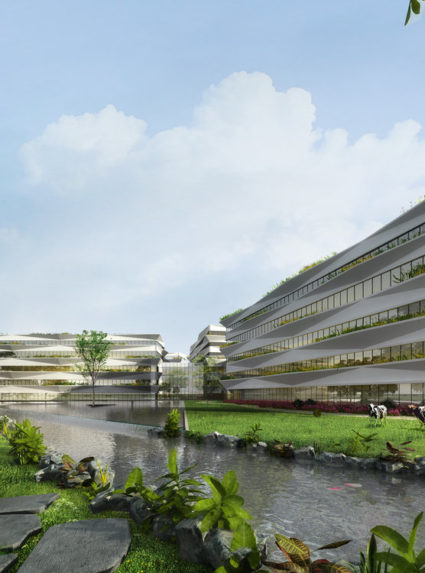
Shanghai Xinchang Comprehensive Medical and Health Center
The Xinchang Comprehensive Medical and Health Center is located in the tourism service zone of Xinchang Town, Pudong New Area, Shanghai, south of Pailou East Road, west of Yanghui Road, and east of Zhong’an Road.
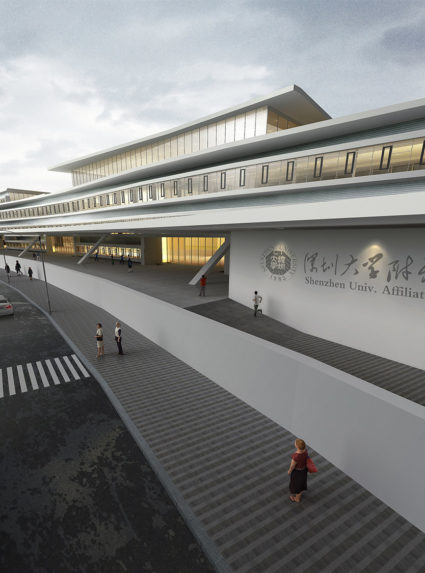
Shenzhen University Hospital
Our design is inspired by the ancient Chinese folk art of paper cutting, where intricate patterns are carved into paper. Xuefu Hospital embodies this concept, with its architectural form resembling delicately layered paper cutouts, creating a structure that reflects a unique cultural identity.
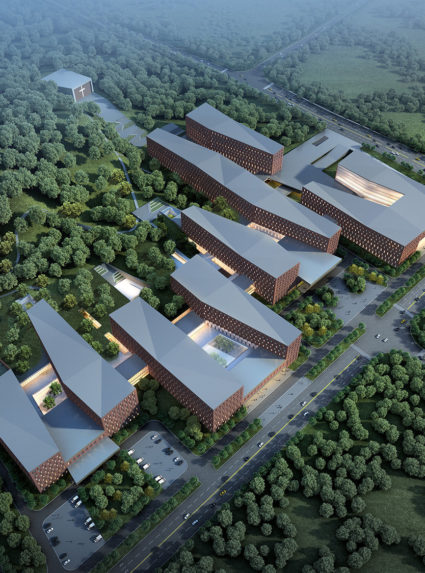
The Fifth Xiangya Hospital of Central South University
Blending with the mountain form and integrating its landscape, the design adopts a landform architecture approach. Utilizing the natural slope differences at the site’s boundary, greenery extends into the hospital’s courtyards and rooftop gardens. The mountain itself becomes a scenic element, seamlessly merging the hospital with its natural surroundings.
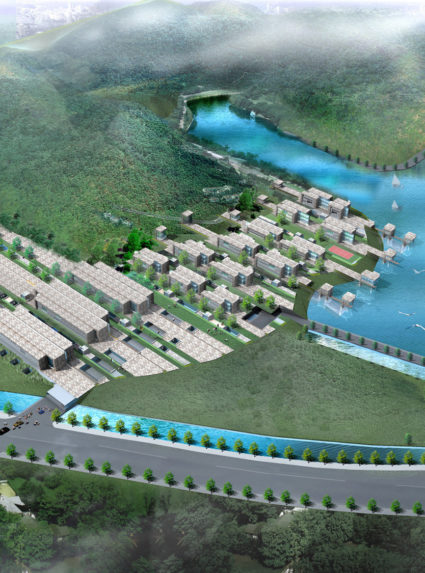
Nanjing Xianlin International Hospital
The site features a mountainous landscape, with both natural peaks and man-made hills interwoven with rivers and Lingshan Road. The key design challenge is harmonizing the relationship between architecture and the natural environment. Positioned within this greenbelt, Xianlin International Hospital will stand as a striking focal point, seamlessly integrated into the surrounding landscape.

Nanjing Pukou International Medical Center
The design comprises four key elements: a central medical zone, hospital units, surrounding landscapes, and an underground logistics hub, forming a cohesive whole. Each unit is connected yet independently operable and expandable. The goal is a centrally organized hospital that maximizes courtyards, minimizes circulation, and ensures efficient transportation links.

Shenzhen Futian Woman and Children Hospital
The building’s façade is inspired by traditional Chinese folded paper lanterns. Five functional volumes, resembling lanterns, are arranged in a staggered composition. Layered metal grilles not only define the architectural form but also provide effective shading from Shenzhen’s intense summer sun.
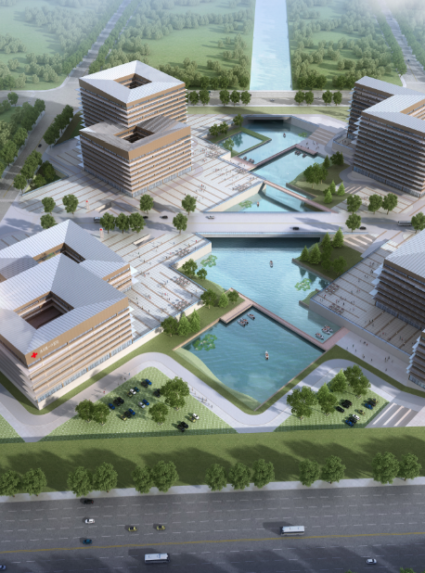
New District Hospita of Luoyang No.1 Hospital of TCM
We recognize the impact of architecture on the environment and nature. As cities continue to grow, minimizing this impact becomes ever more crucial. Our design blurs the boundaries between architecture and nature, striving to return as much space as possible to the natural world. Enhancing patient well-being remains a fundamental design principle for every hospital.
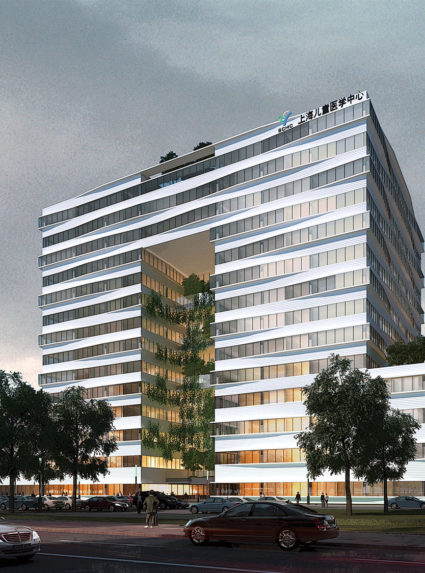
Shanghai Children Medical Center
The hospital’s irregular architectural form is not just aesthetic but also functional. The wave-shaped windowsills create versatile interior spaces that can be flexibly adapted—as seating areas, green planting zones, or even play spaces. These dynamic elements add a sense of discovery while reflecting our design intent: to create a joyful, open, and welcoming garden-like environment where children feel free and embraced.
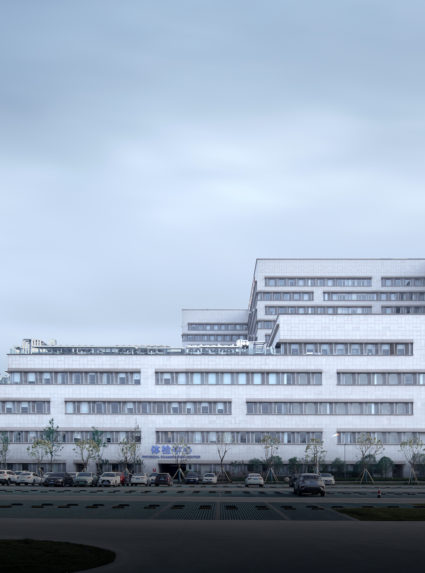
Suzhou Dushu Lake Hospital
Located in Suzhou Industrial Park, Dushu Lake Hospital is designed as a modern garden, where each medical space becomes a healing landscape. The first phase includes a general hospital, with future expansions for specialized centers. The master plan seamlessly integrates medical planning, architecture, landscape, and interiors from the outset, ensuring a cohesive and therapeutic environment that evolves organically with the hospital’s growth.
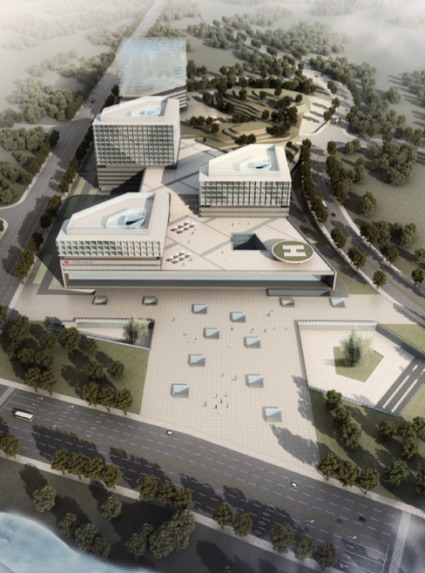
Jinhua People Hospital
In the design of Jinhua People’s Hospital, our goal is to create a welcoming and friendly space, distinct from the traditional high-rise-and-park hospital model. Here, patients share a bright, warm, home-like environment, where they can gather, converse, and find connection.
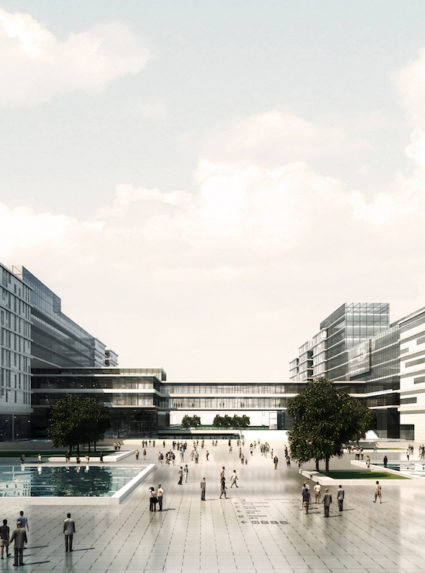
Shanghai Hongqiao International Medical City
In this design, we strive to find the optimal balance between modularity, flexibility, and garden-like spaces. On one hand, the modular layout ensures scalability and adaptability; on the other, garden elements are embedded within this flexible framework, playing an essential and constructive role in shaping the environment.

